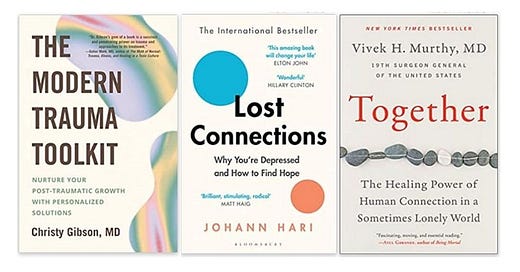Social media connects and disconnects us. We have built-in community within the social circles online - from SM apps to gaming to Discord servers. Yet, we're alone in a room hovering over a screen as we engage. Some of the connections are artificial - we can't read sincerity or authenticity in a comment. In the worst case scenario, this can be predatory. In the best, we can meet our life partner.
The issue in modern times is how our adult lives are designed to promote individualism and productivity, instead of true human purpose - connection and meaning. As we measure success with metrics like home ownership or income, it doesn't reflect joy or pleasure. We can consume travel blogs instead of leaving out the front door. We can work ourselves into a coma and then mindlessly surf a SM site until it's well-past time to sleep. Sites are rewarded by keeping our engagement high, so there's pressure to keep our nervous systems locked in - through making us angry, stressed, or sad. Young people aren't encouraged to join a bowling league like the boomers or a Meetup frisbee golf like Gen X. These generations were raised with (by?) social media - when the adolescent brain seeks out peer support and acceptance, Instagram was the quickest hit of dopamine and oxytocin.
But it doesn't last. Humans need humans.
When we think of social media as a means to an end rather than the destination, that can help. How can we create real community? Find people who genuinely care - about you? About the things that matter to you? About a collective future that's inspiring instead of terrifying?
Loneliness is a modern-day epidemic - it’s been addressed in books like Lost Connections (researcher Johann Hari) to Dr. Vivek Murthy’s book Together - how he, as Surgeon General of the US recognized the significance of our collective dilemma. Humans survive by finding others to help, to meet our physical and psychological needs. As modern society funnels us through the hamster wheel of industrial capitalism, our social lives are less robust.
How do we tend to this? It comes down to time. In my book, The Modern Trauma Toolkit, I speak of our “calm and connected nervous system” - the cranial branch of the vagus parasympathetic system. We are connected to ourselves, to each other, to pets, to nature, to art, to awe. Balancing out our employment obligations and our screen time with these ways of connecting helps us belong to something more than our small lives - it’s the interconnectedness of all beings. To a purpose.
For some, this will look like a spiritual gathering. For others, a community garden project. For many, it’s something as simple as making a point to meet someone for coffee. We can all be leaders in fighting this particular epidemic - loneliness is healed when we reach out our hand to touch something beyond the screen.




